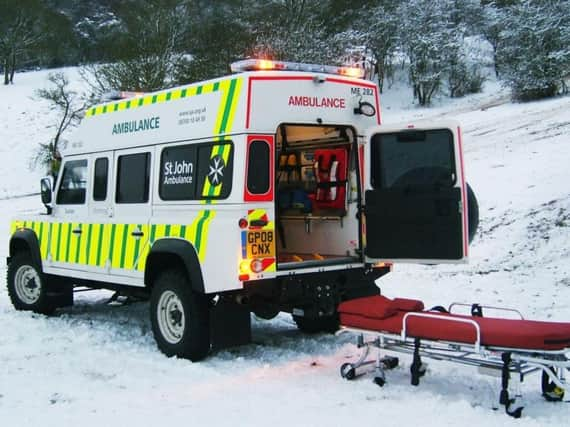This advice from St John Ambulance could help you stay safe in winter


Guidance on how to deal with hypothermia and frostbite has been publicised by the charity as parts of the UK plunge into freezing temperatures.
Though frostbite and hypothermia are rare, it's useful to be prepared and know the symptoms if anyone requires your help.
Advertisement
Hide AdAdvertisement
Hide AdFor further first aid advice, you can visit St John Ambulance online here.
Frostbite
Frostbite happens when part of the skin and other tissues, freeze due to low temperatures.
Frostbite usually affects the fingers and toes as they are the parts of the body furthest from the heart.
If someone has severe frostbite, then they might permanently lose all feeling in that part of their body.
Advertisement
Hide AdAdvertisement
Hide AdFrostbite can lead to the blood vessels and soft tissues becoming permanently damaged, leading to death of the tissue and gangrene.
Frostbite usually happens in freezing or cold and windy weather. People who cannot move around are more likely to get it. Someone with frostbite will probably have hypothermia, so be prepared to treat them for that too.
What to look for:
*Pins and needles
*Paleness of the area and numbness
*Hardened and stiffened skin
*Colour change to the skin. The skin may change from white to mottled and blue. On recovery, the skin may be red, hot, painful, and blistered. When gangrene occurs, the skin may become black due to the loss of blood supply.
How to treat frostbite:
*Help them indoors or somewhere warm
*Remove any constricting clothing or jewellery
*Slowly warm affected parts
*Do not rub
*Do not place on direct heat
*Place affected part in warm water
*Put on a light dressing
*Advise they take the recommended dose of paracetamol
*Call 999 for emergency help.
Hypothermia
Hypothermia is a condition which can happen when someone’s body temperature drops below 35°C (95°F).
Normal body temperature is around 37°C (98. 6°F).
Advertisement
Hide AdAdvertisement
Hide AdHypothermia can become life-threatening quickly, so it’s important to treat someone with hypothermia straight away.
Severe hypothermia, when the body temperature falls below 30°C (86°F), is often fatal.
Hypothermia can be caused by being in a cold environment for a long time.
The elderly, the very young, the homeless and those who are thin, frail, or not able to move around easily are particularly vulnerable.
What to look for:
*Shivering, cold, and pale with dry skin
*Unusually tired, confused, and have irrational behaviour
*Reduced level of response
*Slow and shallow breathing
*Slow and weakening pulse.
How to treat hypothermia:
*Move them somewhere warm and sheltered
*Remove and replace wet clothes
*Cover them in blankets - If outside, protect them from the ground
*Call 999 for emergency help
*Monitor breathing, level of response, and temperature
*If alert, give them a warm drink or chocolate